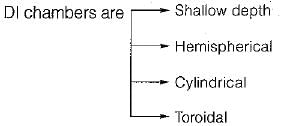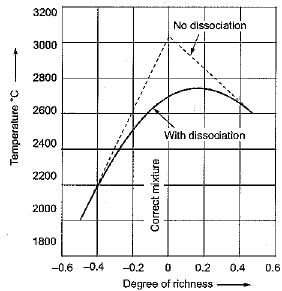Test: Combustion & Combustion Chambers Of IC Engine - 2 - Mechanical Engineering MCQ
20 Questions MCQ Test Topicwise Question Bank for Mechanical Engineering - Test: Combustion & Combustion Chambers Of IC Engine - 2
Which of the following combustion design features reduce (s) detonation in SI engines ?
1. Spark plug located near the exhaust valve.
2. L-head
3. Wedge shaped combustion chamber
4. Short flame travel distance
Select the correct answer :
1. Spark plug located near the exhaust valve.
2. L-head
3. Wedge shaped combustion chamber
4. Short flame travel distance
Which of the following type of valve arrangement is actuated by two cams mounted on two camshafts driven by the crankshaft through timing gears ?
| 1 Crore+ students have signed up on EduRev. Have you? Download the App |
The delay period in Cl engine depends upon
1. Temperature and pressure in the cylinder at the time of injection.
2. Strength of fuel mixture.
3. Relative velocity between the fuel injection and air turbulence pressure of residual gas.
4. Engine output.
Select the correct answer :
1. Temperature and pressure in the cylinder at the time of injection.
2. Strength of fuel mixture.
3. Relative velocity between the fuel injection and air turbulence pressure of residual gas.
4. Engine output.
All of the following parameters reduce knocking tendency in a compression ignition engine, except
Consider the following measures:
1. Increasing the compression ratio
2. Increasing the intake air temperature
3. Increasing the length to diameter ratio of the cylinder
4. Increasing the engine speed
The measures necessary to reduce the tendency to knock in Cl engines would include
Which of the following is not direct-injection type?
Which of the following type of combustion chamber has negligible squish ?
Consider the following characteristics of indirect-injection combustion chambers:
1. Low injection pressure
2. No cold starting problem
3. Direction of spraying is not significant
4. High specific fuel consumption
Q. Which of these are valid?
The phenomenon of pre-ignition
Consider the following statements regarding a Cl engine:
1. Cl engine known can be reduced by increasing compression ratio.
2. Thermal efficiency of Cl is lower relative to a SI engine.
3. Cl engine has a higher specific output relative to SI engine.
4. Cl engines use leaner mixture relative to SI engine.
Q. Which of the above statements are correct?
Self ignition temperature of diesel as compared to petrol is
The silencer of an internal combustion engine
In an I.C. engine, the process of removing the burnt gases from the combustion chamber of the engine cylinder is known as
In the operation of four-stroke diesel engines, the term ‘squish’ refers to the
With dissociation peak temperature is obtained
Fuel-air ratio affects maximum power output of the engine due to
Mean effective pressure at a given compression ratio is maximum when the air-fuel ratio is
Cycles with lean to very lean mixture tend towards
For a given compression ratio, as the mixture is made progressively rich from lean, the mean effective pressure
|
45 videos|314 tests
|
|
45 videos|314 tests
|




















